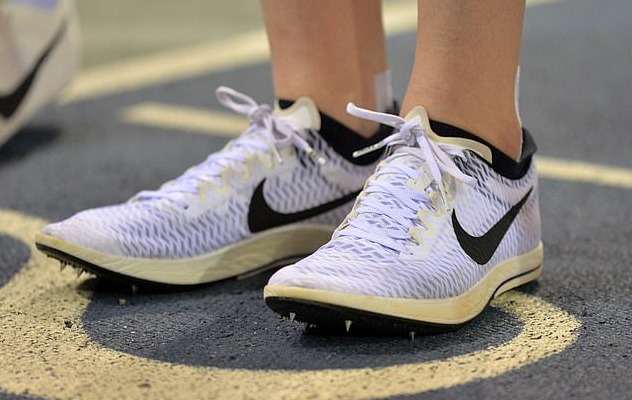World Athletics is set to tighten regulations regarding high-tech running shoes.
The governing body’s council has been considering the recommendations of a group of experts, with an announcement expected on Friday.
Amid fears of the threat of a potential legal challenge, the review panel has chosen not to impose a blanket ban on Nike’s controversial Vaporfly range, BBC Sport understands.
But some modified versions could be barred from elite competition under new temporary rules designed to bring athletes greater clarity before the Olympics begin in Tokyo in July.
Those rules will restrict the thickness of the shoes’ soles, although there will also be an announcement of a new longer-term biometric study of the technology being used in both distance and track running.
Manufacturers will be asked to submit any existing new prototypes to World Athletics – formerly known as the IAAF – for approval before being used in major competitions, and halt any further technology until after the Olympics.
But all existing records set with the shoes will be allowed to stand.
Current rules state “shoes must not be constructed so as to give athletes any unfair assistance or advantage – and any type of shoe used must be reasonably available to all in the spirit of the universality of athletics”.
But the critics believe this is insufficient, and that the regulations have been overtaken with the Vaporfly range (with pairs costing around £240) revolutionising elite distance running since they were released in 2016.
Many are now concerned that the technology has distorted the record books, prevents fair competition with athletes not sponsored by Nike, and is tantamount to ‘technological doping’.
Others, however, believe innovation of equipment has always been an inevitable part of sporting evolution, that other manufacturers are developing their own technology, and that new records help generate interest.
Against a backdrop of mounting debate and controversy, World Athletics must now make what is being seen as one of the most important decisions in the sport’s history.
Characterised by increased ‘stack-height’ or depth, patented extra-springy foam and an embedded carbon plate which supposedly helps propel the wearer forward, Nike claims the shoe can improve running economy by 4%.
Last year, bespoke hybrid versions were worn by Eliud Kipchoge when he became the first athlete to run a marathon in less than two hours using a pair of the next-generation ‘Alphafly’ in Vienna, and then by fellow Kenyan Brigid Kosgei in Chicago when she obliterated Paula
Radcliffe’s long-standing women’s world record in what was understood to be a prototype of the ‘Vaporfly Next%’.
It is unclear whether the modified versions used would meet the new regulations set to be announced by World Athletics.
The governing body has said that “it is clear that some forms of technology would provide an athlete with assistance that runs contrary to the values of the sport”.
It said: “The challenge…is to find the right balance in the technical rules between encouraging the development and use of new technologies in athletics and the preservation of the fundamental characteristics of the sport: accessibility, universality and fairness.”
In a statement Nike said: “We respect the spirit of the rules and we do not create any running shoes that return more energy than the runner expends.”
A New York Times study of results from more than a million amateur races suggested runners using Vaporflys were running 4-5% faster than they would in an ‘average” running shoe.
The five fastest marathons of all time have been run in the past 16 months by athletes wearing varying forms of the Vaporfly technology.
American runner Kara Goucher has spoken of her fears she may have narrowly missed out on qualification for the US marathon team at the 2016 Rio Olympics because she was not wearing the shoes, unlike two of the three athletes who beat her. By then Goucher had left the Nike
Oregon Project having raised concerns about her disgraced former coach Alberto Salazar.



